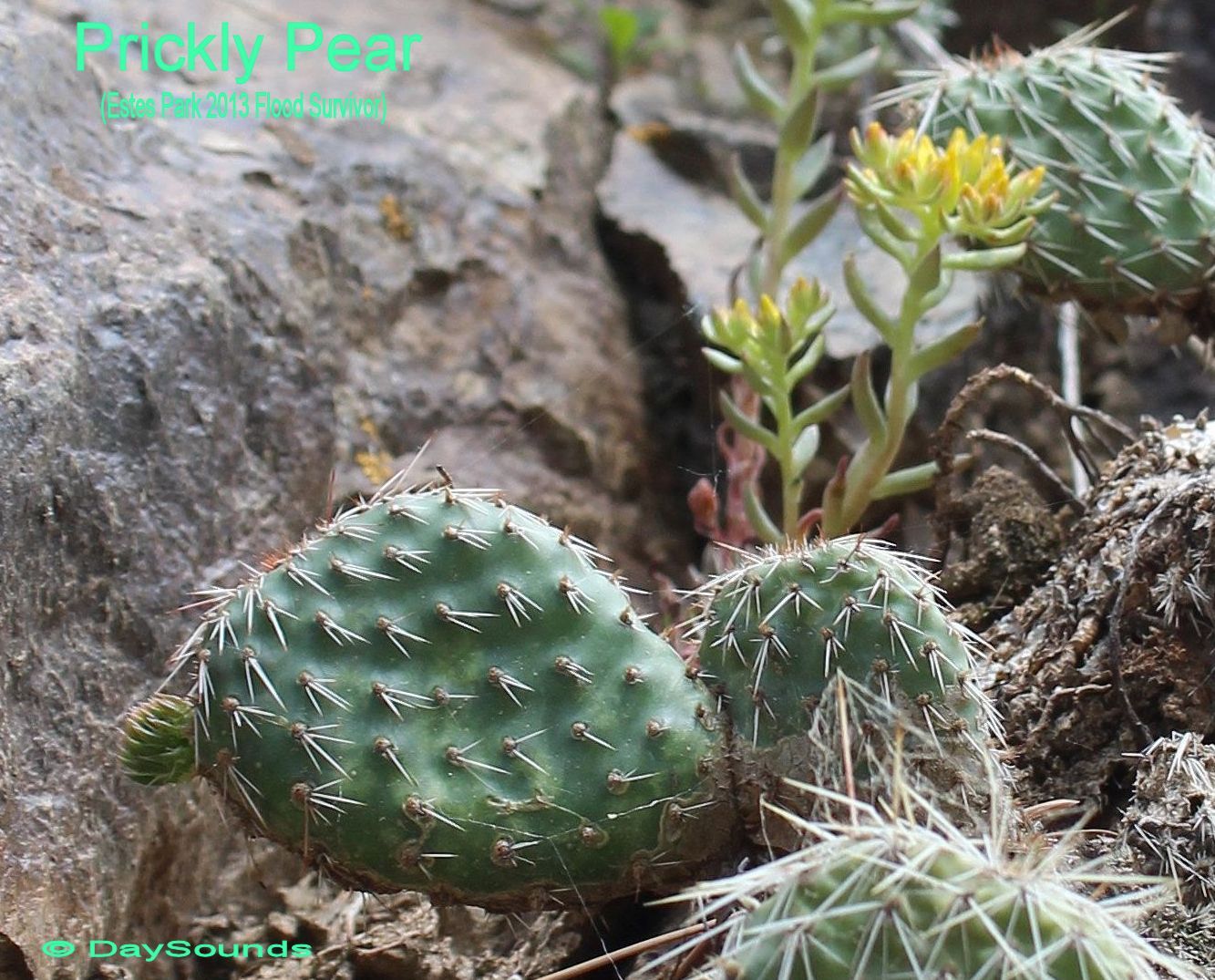by DaySounds © 2013-16

Prickly Pear Cactus
to lower the levels of bad cholesterol, control blood sugar levels, reduce obesity, and help
the digestive system function properly. Used externally, as a poultice, they can be used to
help heal superficial wound infections. Besides the figs or pears (which can be yellow,
pink, red or purple), the tender pads of the cacti are also edible, and can be boiled, grilled,
or sautéed. Many people have used these cacti to make jelly and candy through the
centuries and continents--except for Antarctica, it grows in all of them.
Most prickly pear cacti have glochids (tiny, difficult to see, barbed spines that easily attach
to the skin). The best way to get rid of the spines/needles (applicable to any type of cactus)
is to burn and peel them*. However, save a handful of needles (properly stored) just in case
you need them later for fishing, sewing, or other useful purposes.
There are 3 species of prickly pear cactus, and their hybrids, which abound in Colorado
(all of them edible--pads, flowers, and fruits):
*Opuntia polyacantha ( short spine prickly pear)*
It has short and cluster together spines (plains, foothills, and montane).
*Opuntia macrorhiza (wrinkly prickly pear)*
It has larger pads and longer spines (plains, foothills, and montane).
The spines are reduced or absent toward the bottom of the pads--which often have
horizontal wrinkles.
*Opuntia phaeacantha (tulip/desert prickly pear)*
It is mostly found in hot deserts, but sometimes can be seen in other areas as well.
At times, one encounters the pads covered with fungus-looking, waxy white patches.
They are secretions of cochineals (Dactylopius coccus)--insects that attach to the pads
and live out of its nutrients. They cover themselves and their nymphs with that wax to
protect themselves from predators and the weather elements. Those nymphs, later on,
secret a long, thin, light, white, thread to which they are attached; then, the wind
propels it up, with the nymph at the upper end, and carries it away. Oftentimes, the
nymph lands on the pad of another cactus, where it starts a new family (females are
larger than males, but don't have wings--males do).
If you squeeze one of those waxy patches with your fingers, probably you will get
them stained with a blood-looking liquid; it is carminic acid, manufactured by the
cochineals. Carminic acid represents in many cases about ¼ of the insect's dry weight.
Without realizing it you have squeezed the cochineals dead.
Carminic acid has been used for centuries to produce a scarlet dye, which has been
used to make luxurious clothes. In the last decades, it has been used also as a natural
food colorant. However, it takes thousands of crashed cochineals to make just one
ounce of dye, which renders the final product expensive.
Are cochineals edible? Unless you have an allergic reaction to them, they are.
*.- DaySounds advices to always pack about 2 yards of high melting temperature,
non-toxic, wire (shirt metal hanger type), for that and many other purposes. It is also
advisable to pack elementary school white glue, gauze, and packing tape--among other
possible reasons, to remove any glochids from your skin. We don't recommend the use
of gloves to handle these cacti because glochids are barbed and will attach to them as well.
©DaySounds
PO Box 746497
Arvada, CO 80006
USA